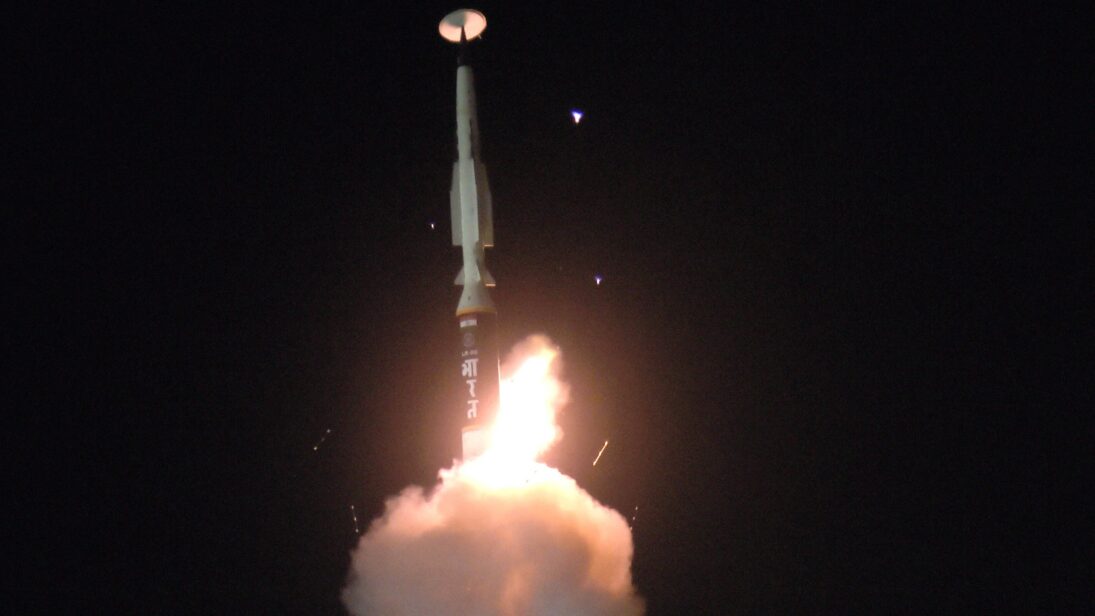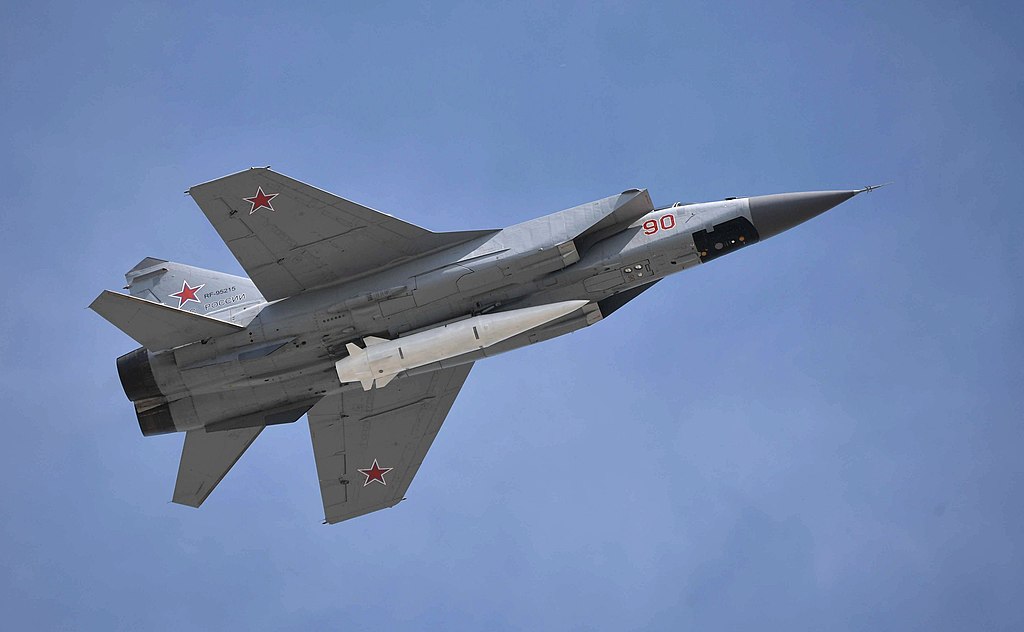
On November 16, 2024, India’s Defense Research and Development Organization (DRDO) conducted a test of what it claimed was a “long-range hypersonic missile” from Abdul Kalam Island in the Bay of Bengal. The missile has a reported range of 1,500 kilometers, can carry various types of payloads, and was termed by the Indian defense minister as a “major milestone,” bringing India into a “group of select nations” with this capability.
This is not India’s first foray into hypersonic missiles. DRDO officials alluded to the development of a hypersonic technology demonstrator vehicle (HSTDV), an experimental scramjet engine design, as early as 2008. The technology was tested in subsequent trials in 2019 and 2020 with limited success. The BrahMos-II cruise missile in joint development with Russia is purportedly a hypersonic cruise variant, traveling at seven times the speed of sound or Mach 7. This missile was supposedly slated for testing by 2020, but has now been delayed. Separately, since 2017, Indian deep-tech startup HTNP Industries has also been working on the research and development of a hypersonic boost-glide vehicle (HGV-202F). It will be some time before these tests lead to the adoption of hypersonic missiles by the Indian armed forces. However, the emphasis on these missiles demonstrates not so much the advantage that speed provides but rather India’s growing technical prowess in advanced missile development, driven by the desire to enhance its security and prestige alike.
What are Hypersonic Missiles?
A hypersonic missile travels at five times the speed of sound or more — that is, Mach 5 and higher. They offer increased speed, maneuverability, and precision compared to existing ballistic and cruise missiles, generally making them invulnerable to advanced missile defense systems. Currently, there are two kinds of hypersonic missiles. Hypersonic cruise missiles use an air-breathing scramjet engine to propel at Mach 5+ speeds within the atmosphere. Whereas boost-glide vehicles are ballistic-missile-launched projectiles that exit and then re-enter the atmosphere to glide and maneuver to their targets. While India did not specify which kind of missile it most recently tested, it was most likely a hypersonic cruise missile.
The emphasis on hypersonics demonstrates not so much the advantage that speed provides but rather India’s growing technical prowess in advanced missile development, driven by the desire to enhance its security and prestige alike.
Russia, China, and the United States lead the world in hypersonic missile development. But more recently, newer actors like Iran and Iran-backed non-state armed groups, such as Ansar al-Allah, have both claimed to possess hypersonic capabilities. As more actors publicly claim that they have hypersonic missiles, and these weapons increasingly enter into use in conflicts like the Russia-Ukraine war, it is critical to understand how these weapons work, how they impact strategic stability, and what their comparative advantages and disadvantages are.
What constitutes a hypersonic missile remains contested. Technically, a hypersonic missile needs to be a projectile moving between Mach 5 and Mach 25. Consequently, any ballistic missile traveling more than 1,000 kilometers at hypersonic speeds in its terminal phase can be considered a hypersonic.
Since speed is the most important variable for a hypersonic missile, these weapons encompass a wide range of capabilities. For example, a Mach 6 flying hypersonic missile, like the Russian Kinzhal, will in most cases be easier to track and engage via advanced air defense systems. Ukraine claims to have taken down many volleys of Kinzhal since May 2023 using U.S.-provided Patriot surface to air missiles. Meanwhile, the boost-glide Avangard system of a Mach 20+ speed that Russia is currently developing would be far more difficult to detect.
But regardless of this diversity in capabilities, hypersonic weapons are extremely costly, and compared to older-generation ballistic missiles with maneuverable reentry vehicles or multiple independently-targetable reentry vehicles, they give far less bang-for-the-buck in evading missile defense systems. So, what are hypersonic weapons good for then? The only real advantage of hypersonic weapons is their maneuverability, i.e. offering the potential to evade an adversary’s advanced missile defense systems. Hypersonic development is thus less important for the actual speed advantages it provides and more for a military to demonstrate its technological prowess and as a matter of pride.

Impact on Strategic Stability in South Asia
To understand whether this technology materially changes the strategic balance in the subcontinent, it is important to assess how India’s hypersonic capabilities stack up against its key strategic rivals in South Asia. China possesses a formidable missile and air defense apparatus that includes the domestically produced HQ-9 SAM and HQ-19 anti-ballistic missile system, alongside the Russian-manufactured S-300 and S-400. Comparatively, in Pakistan’s air defense kit, only the Chinese HQ-9 variant has the limited capability to take down tactical or battlefield ballistic missiles, while another Chinese-supplied LY-80 Low to Medium Air Defense System has reportedly only a 60 percent single kill probability against cruise missiles.
Given the proximity of the two neighbors, hypersonic speed offers India few comparative advantages vis-a-vis Pakistan. Considering the already extremely brief reaction time faced by Pakistani decisionmakers against Indian missiles, hypersonic weapons do not substantively change the strategic balance between India and Pakistan. All major Pakistani cities lie within 300 to 1,000 kilometers of a potential open-source-assessed missile and warhead facility in Morki, Rajasthan in India. For short-range targets up to 350 kilometers from this missile base, ballistic missiles like Prithvi-II can reach Pakistan within around 5 to 8 minutes. Cruise missiles such as the supersonic BrahMos have been tested to take 290 seconds (or approximately 4.88 minutes) to hit a target 290 kilometers away. Furthermore, the Agni-I ballistic missile can reach Pakistani cities like Islamabad (700 kilometers away) in approximately 9.5 minutes based on its tested speed. According to the CEO of Brahmos Aerospace, a future hypersonic BrahMos-II will be characteristically similar to the Russian Zircon missile, which reportedly possesses a maximum speed of Mach 8+, although during testing it traversed 479.5 kilometers in around 4.5 minutes, i.e. at Mach 5.18. If these capabilities are replicated in the Brahmos-II, this higher speed would reduce Pakistan’s reaction time, but not by much. Therefore, deploying a hypersonic missile in a hypothetical future scenario against Pakistan would be superfluous for India, in the absence of advanced Pakistani missile defense systems. The same strategic objective can easily and cheaply be achieved with India’s existing ballistic and cruise missile inventory.
The distance for a missile to travel from India to China is greater than it is from India to Pakistan, yet hypersonic missiles would not meaningfully compress the travel time even in this case. Assuming India launches its Agni-V ballistic missiles from its strategic bases in the Andaman and Nicobar Islands in the Bay of Bengal, the cities of Beijing (around 4000 km) and Shanghai (around 3750 km) can potentially be reached in approximately 20 minutes. Similarly, Agni-III can likely reach other major cities like Guangzhou (about 2700km) and Wuhan (approximately 2925km) from its base in Wheeler Island in about 13 minutes. In the future, if the Indian startup mentioned above does successfully develop its HGV-202F, designed for upper hypersonic speeds (i.e., Mach 10 to 20), this would still not meaningfully compress the time to significantly alter the strategic calculus. Nonetheless, given the Chinese ballistic missile defense (BMD) systems’ ability to intercept India’s existing missiles, a future Indian maneuverable hypersonic weapon would have a greater probability of evading interception, potentially justifying its costly development. Additionally, such hypersonic capabilities could enhance India’s perceived nuclear deterrence vis-à-vis China and elevate New Delhi’s global prestige.
The concern with India’s hypersonic missile development from Pakistan’s perspective, then, is that this technological advancement accelerates New Delhi’s modernization and may impact its strategic behavior. Since the overt nuclearization of South Asia in 1998, despite some deterioration in the “nuclear taboo”, the India-Pakistan relationship has remained fairly strategically stable, as both states had mutual vulnerabilities in ballistic missiles. However, Pakistan has perceived India’s quest to develop BMD systems in the early 2000s, and their adaptation in the decade since, as destabilizing. In a future worst-case scenario, Islamabad could see the addition of hypersonic weaponry as giving India the incentive to conduct a massive decapitating first strike, confident that retaliation from Pakistan’s residual nuclear forces, if any, can be defended by their BMD systems. However, this would require massive Indian military investment in intelligence, surveillance and reconnaissance (ISR) and first-strike capability of hundreds of highly-accurate ballistic and cruise missiles, coupled with a 100 percent kill probability of its BMD system. Given the challenges to Indian military modernization and the perceived threat from China, this is unlikely in the near future.
The concern with India’s hypersonic missile development from Pakistan’s perspective, then, is that this technological advancement accelerates New Delhi’s modernization and may impact its strategic behavior.
Hypersonic Developments Remain Overhyped
Pakistani policymakers do not anticipate a massive first strike from India without a preceding crisis, nor does Pakistan have BMD or expressed aspirations to develop maneuverable hypersonic missiles. Its nuclear policy of full spectrum deterrence under the rubric of credible minimum deterrence focuses on developing a triad covering the entirety of India from 60 to 2,750 kilometers, notwithstanding existing Indian BMD systems. Much of Pakistan’s missile development over the last two decades has focused on either evading or overwhelming Indian missile defenses, using the MIRV-capable Ababeel ballistic missile, Babar and Ra’ad air-launched cruise missiles series, and the recently developed Fatah series of multiple-launch rocket systems. As a result, strategic policymakers in Pakistan broadly feel that Islamabad does not have to seek a tit-for-tat technological match with New Delhi, particularly given the widening economic asymmetry vis-a-vis India.
In the future, as hypersonic weapons become more widespread, Pakistan could be tempted to follow suit. Barring China’s voluntary adherence to the Missile Technology Control Regime and U.S. sanctions challenges for Islamabad, future collaboration between China and Pakistan cannot be totally ruled out. However, in the near term, the development of these weapons will remain economically unfeasible and strategically unappealing for Pakistan. In South Asia, then, India and China will likely continue to pursue the adoption of hypersonic missiles to enhance their relative military prestige. On the other hand, Pakistan will continue to rely on nuclear weapons and further develop its credible second-strike capability, while augmenting conventional missiles with greater accuracy and maneuverability.
Also Read: Agni-V: The New MIRV Race in South Asia
Views expressed are the author’s own and do not necessarily reflect the positions of South Asian Voices, the Stimson Center, or our supporters.
***
Image 1: Government of India via Wikimedia Commons
Image 2: Russia’s Presidential Press and Information Office via Wikimedia Commons


